Toshiba Qosmio X775: Toshiba's Gamer Grows Up
by Dustin Sklavos on August 17, 2011 12:25 AM ESTGaming Performance
While the Toshiba Qosmio X775 and its NVIDIA GeForce GTX 560M don't jump whole hog into the highest end of mobile gaming hardware, there's enough performance here to merit a pretty broad look at it across our spectrum of tests. Note that it features a screen with a 1600x900 native resolution; while I'm not a fan of that resolution on 17.3" notebooks, you'll see it does seem to be about the right resolution for the GTX 560M.

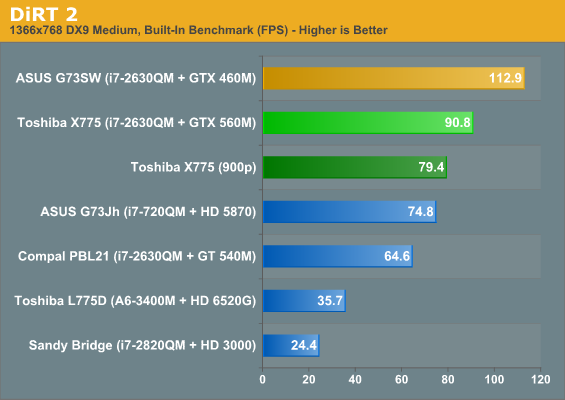
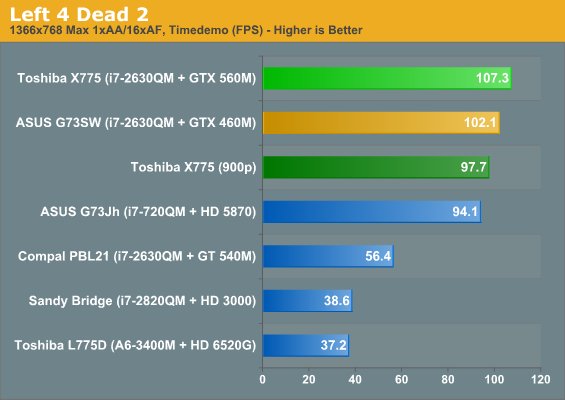
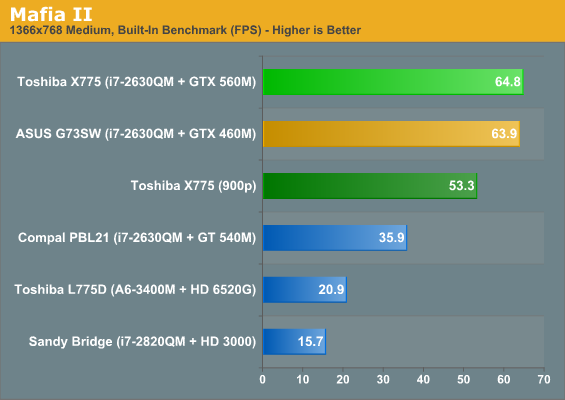
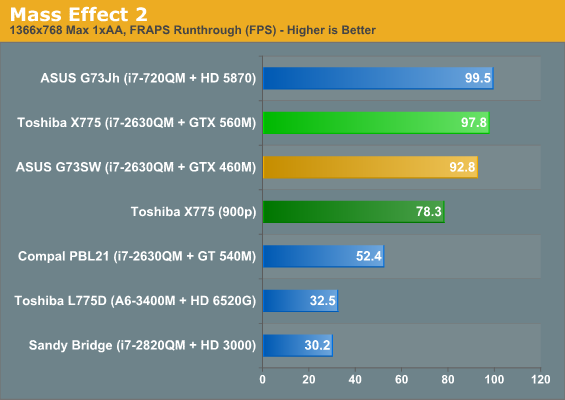

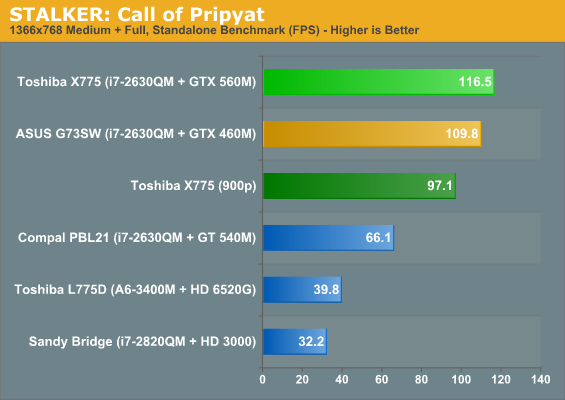
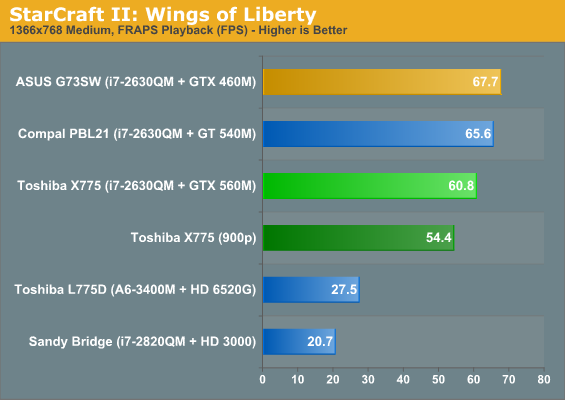
Right away from our medium tests, you can see why the 560M probably didn't need this suite of tests run. We tend to want to test performance class GPUs like the 560M and Radeon HD 6800M series at our medium and high presets, but the 560M bridges the gap between high and ultra. Medium settings barely put a dent in the 560M. That said, for whatever reason the Qosmio seems to suffer some overhead compared to our other i7-2630QM systems in StarCraft II; hopefully moving the bottleneck further to the GPU will let the Qosmio shine.
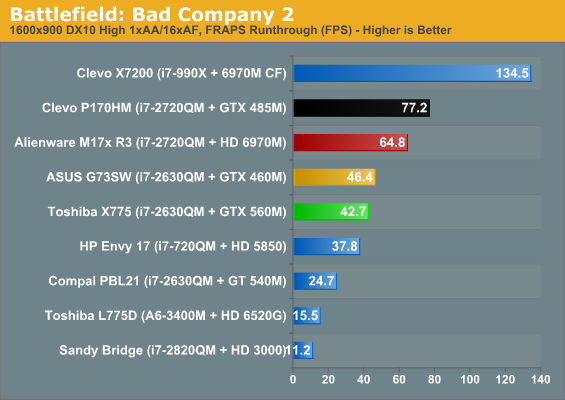
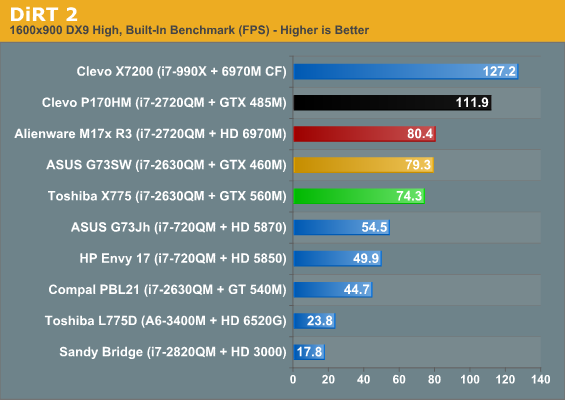
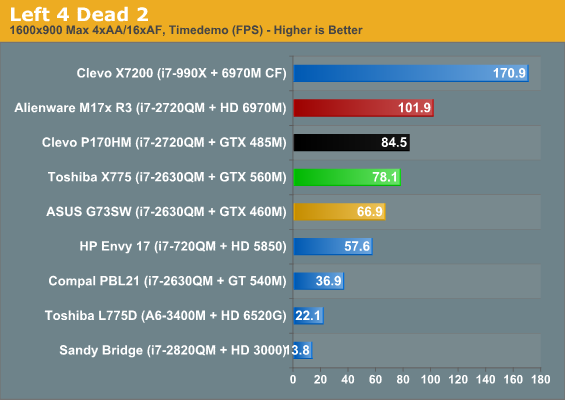
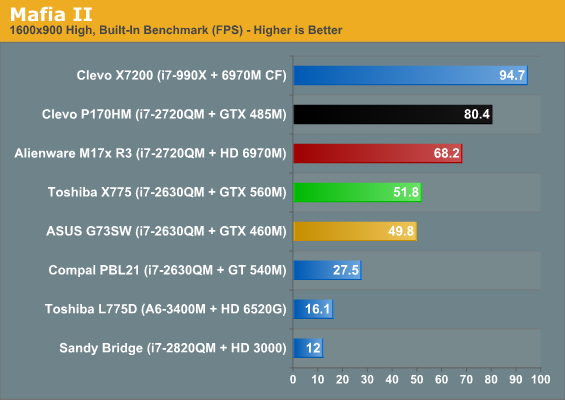
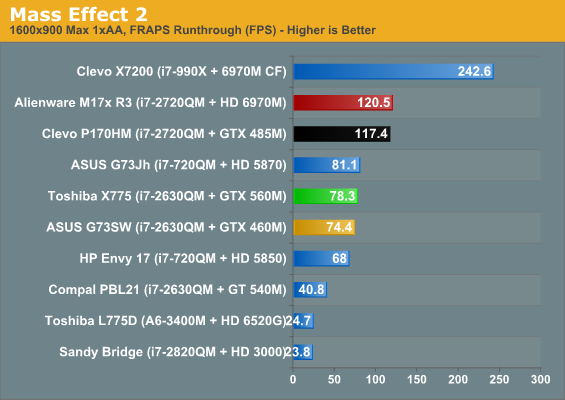
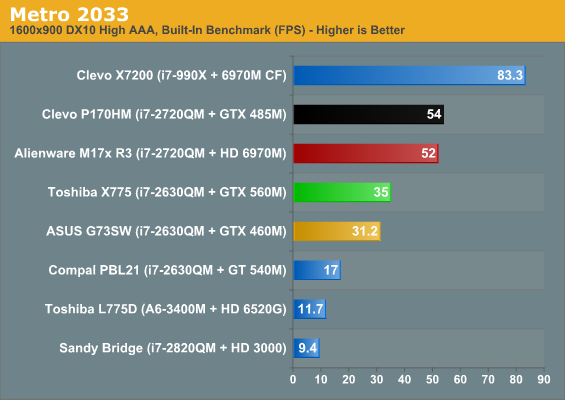
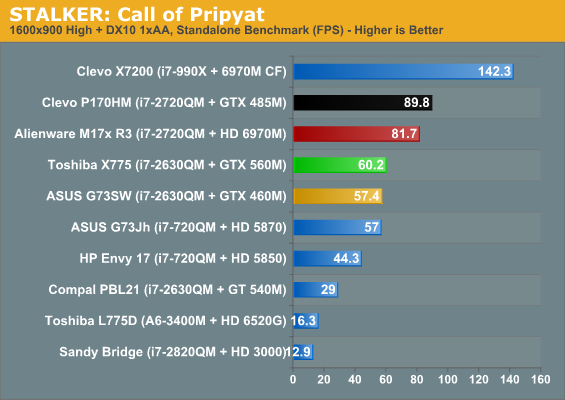
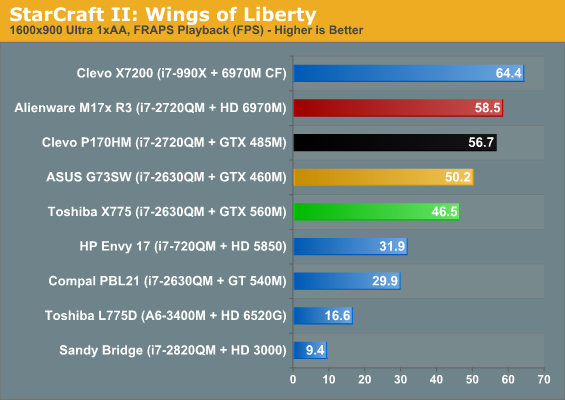
Somehow the ASUS G73SW continues to be a freak of nature, outperforming the Qosmio X775 despite the X775's more recent drivers and 100MHz core clock advantage. The X775's performance isn't bad necessarily and the clocks are running at spec, though the benchmarks it leads in, the leads are fairly slight. As with PCMark, there appears to be some optimization left on the table, or possibly the use of Optimus is having a slight impact on performance.
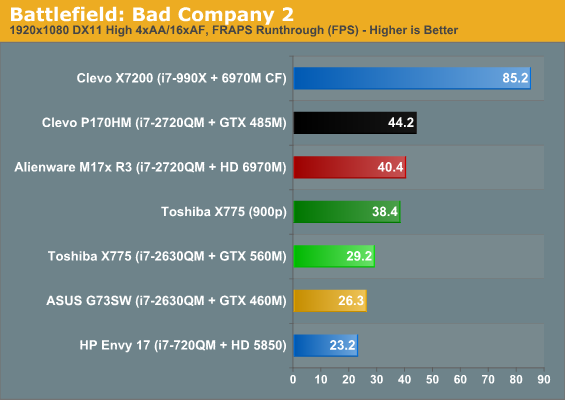
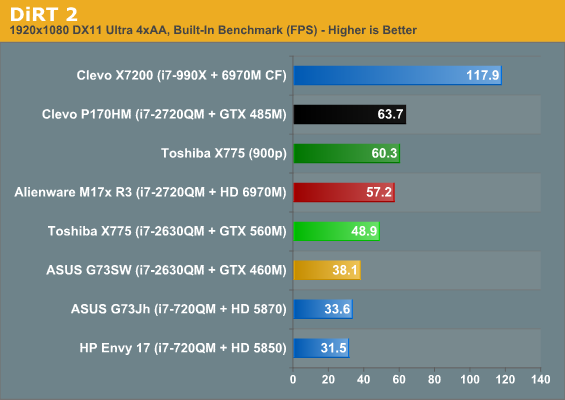
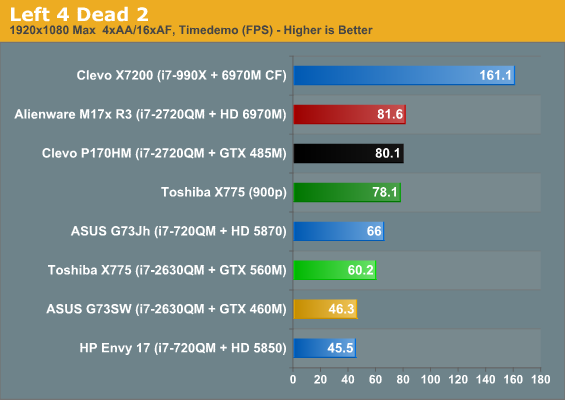
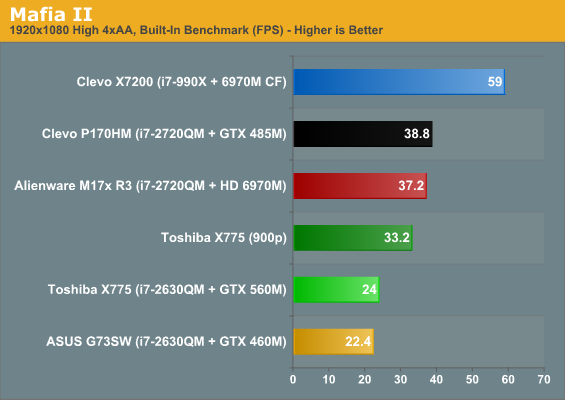

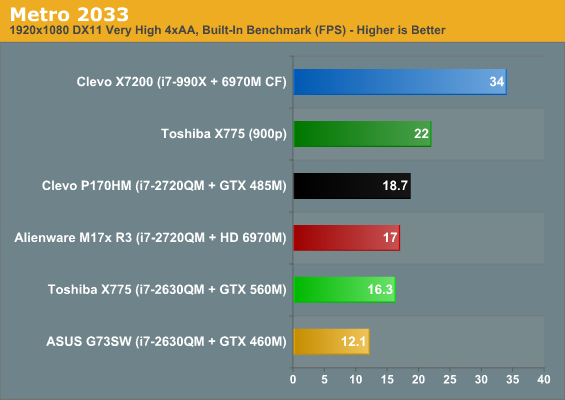

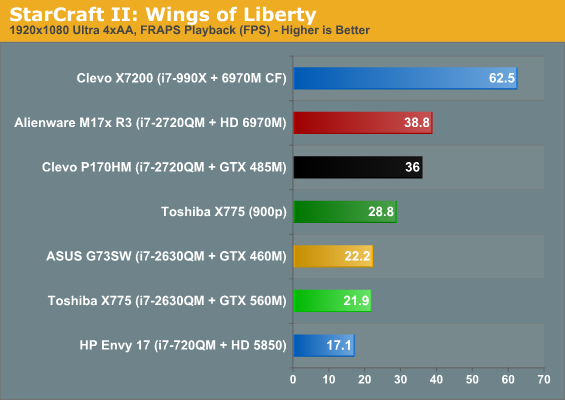
There it is. At our ultra setting, the 560M finally begins to break away from its predecessor, though we don't seem to be quite there yet in terms of pure performance. Given that the 460M and 560M have the same memory bandwidth, there are likely some titles where that's the bottleneck. Ultimately, though, the GeForce GTX 560M is by no means a bad gaming GPU, but it still can't hang with the top end graphics hardware. This is a mainstream gaming part best suited for 900p or 1080p, but definitely not with 4xAA enabled on all titles.










25 Comments
View All Comments
Jonahkirk - Thursday, August 18, 2011 - link
When I first saw the New Qosmio, I thought "at last, a notebook for me!" But, I thought i was looking at aluminum, not plastic, and no 1080p is a sinker in a high price notebook. I would love to be able to self configure these with a 1080p screen, a proc. upgrade and SSD\hardrive combo. But, I want aluminum-that would be cool.qstechwriter - Friday, August 19, 2011 - link
You can adjust backlight setting to: OFF, 1 sec, and ON. Press the Fn key, press Z, and make your selection.The0ne - Friday, August 19, 2011 - link
17.3" LED Glossy 16:9 1600x900I don't think the laptop will ever be a consideration for either gaming or office work.
JNo - Friday, August 19, 2011 - link
What is it with larger laptops with 2 drive bays always going for a 2x HDD configuration?! (also Alienware are guilty of this). Surely people want an SSD for boot & speed and a traditional HDD for storage, even, or especially, on a laptop.I don't know why laptop manufacturers are so dumb and slow to coming round to implementing this configuration and making it mainstream, especially now that the new mSATA standard is out.
oraclelaw - Saturday, August 20, 2011 - link
well lets see, the G73 w the 460m pulls down a 3dmark11 of 1800 something?the Qosimo with the gtx560m pulls down a 2005?
what do they cost? 1500-1700 US?
well my fully equipped (including blu-ray) overclocked AND undervolted $750.00 HP Dv6z with amd's LLano chip, pulls a 3dmark11 of p2110 with a graphics score of just under 2200...at much cooler temps.
Maybe I should buy another to even things up...LOL. .Time for the 'i' series boxxes to start coming down in price.
Seer